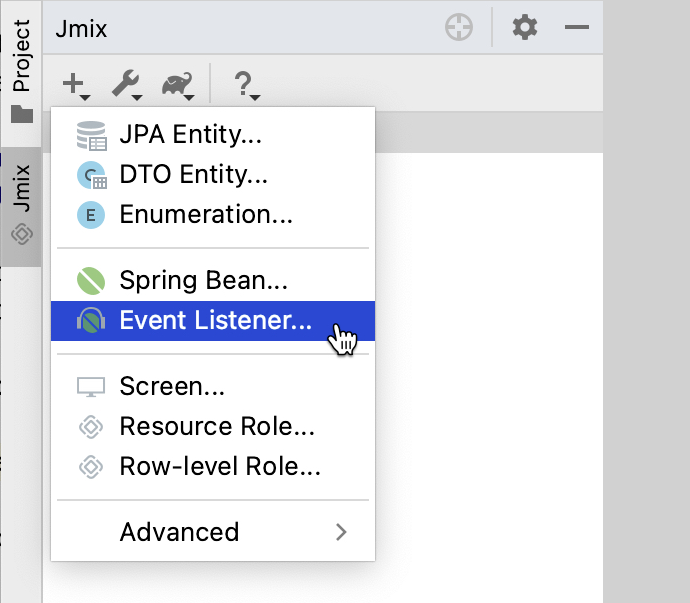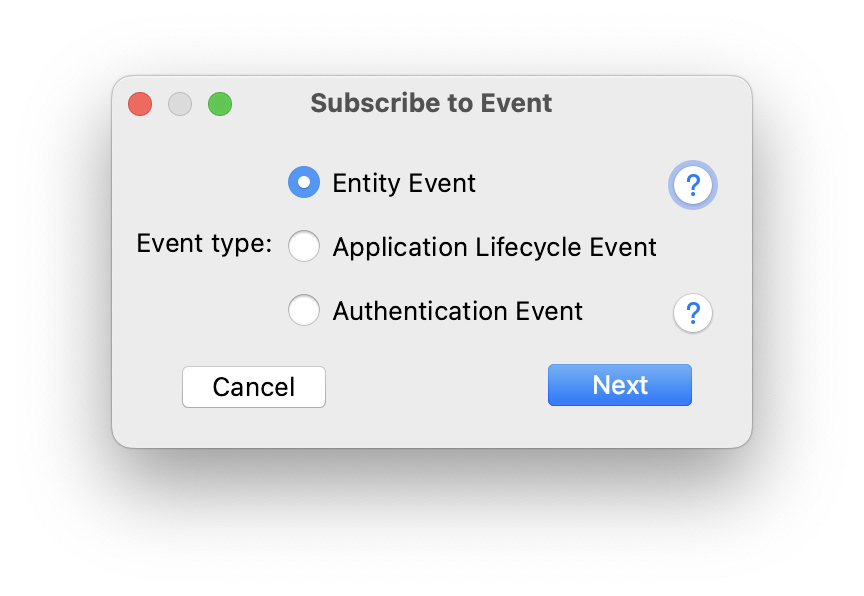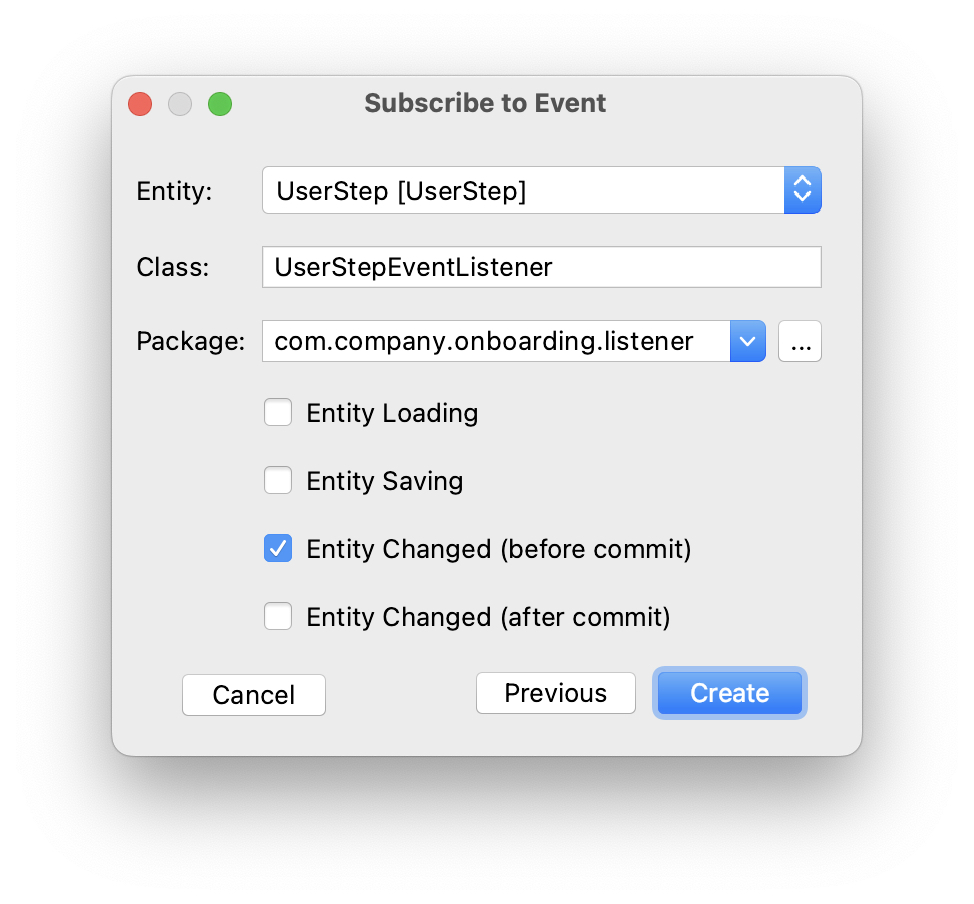8. Using Entity Events
At this stage, you have completed the data model and UI of the application. But there is a flaw in the application logic: employees can see and complete their onboarding steps in My onboarding screen, but the Onboarding status attribute of the User entity is not updated accordingly.
In this chapter, you will implement the missing part: the Onboarding status attribute of the User entity will be updated whenever the state of the corresponding UserStep instances changes.
Creating EntityChangedEvent Listener
If your application is running, stop it using the Stop button () in the main toolbar.
In the Jmix tool window, click New () → Event Listener:

On the first step of the Subscribe to Event wizard, select Entity Event:

Click Next.
On the next step of the wizard, select UserStep in the Entity field and select the Entity Changed (before commit) checkbox:

Click Create.
Studio will create a Spring bean with a method annotated with @EventListener:
@Component
public class UserStepEventListener {
@EventListener
public void onUserStepChangedBeforeCommit(EntityChangedEvent<UserStep> event) {
}
}The framework will invoke this method each time after saving a changed UserStep instance to the database, but before committing the database transaction. If the method throws an exception, the transaction will be rolled back.
The method accepts the EntityChangedEvent object which contains the changed entity id, type of the change (create/update/delete) and information about changed attributes.
Implement the listener as below:
package com.company.onboarding.listener;
import com.company.onboarding.entity.OnboardingStatus;
import com.company.onboarding.entity.User;
import com.company.onboarding.entity.UserStep;
import io.jmix.core.DataManager;
import io.jmix.core.Id;
import io.jmix.core.event.EntityChangedEvent;
import org.springframework.beans.factory.annotation.Autowired;
import org.springframework.context.event.EventListener;
import org.springframework.stereotype.Component;
@Component
public class UserStepEventListener {
@Autowired
private DataManager dataManager;
@EventListener
public void onUserStepChangedBeforeCommit(EntityChangedEvent<UserStep> event) {
User user;
if (event.getType() != EntityChangedEvent.Type.DELETED) {
Id<UserStep> userStepId = event.getEntityId(); (1)
UserStep userStep = dataManager.load(userStepId).one();
user = userStep.getUser();
} else {
Id<User> userId = event.getChanges().getOldReferenceId("user"); (2)
if (userId == null) {
throw new IllegalStateException("Cannot get User from deleted UserStep");
}
user = dataManager.load(userId).one();
}
long completedCount = user.getSteps().stream()
.filter(us -> us.getCompletedDate() != null)
.count();
if (completedCount == 0) {
user.setOnboardingStatus(OnboardingStatus.NOT_STARTED); (3)
} else if (completedCount == user.getSteps().size()) {
user.setOnboardingStatus(OnboardingStatus.COMPLETED);
} else {
user.setOnboardingStatus(OnboardingStatus.IN_PROGRESS);
}
dataManager.save(user); (4)
}
}| 1 | If the UserStep instance has been created or updated, get its id from using the getEntityId() method of the event. Then load the instance and get the related User instance. |
| 2 | If UserStep has been deleted, it cannot be loaded from the database anymore. But in this case event.getChanges() provides values of all attributes of the deleted entity. |
| 3 | Set onboardingStatus attribute of the related User to a value depending on the state of all its UserStep items. |
| 4 | Save the updated User instance to the database. |
With this listener in place, the consistency between the collection of UserStep instances and the onboardingStatus attribute of the User entity will be maintained regardless of what process modifies UserStep instances. For example, you can change a UserStep directly through Data Tools → Entity Inspector, and still see the corresponding change of User.onboardingStatus.
You can rely on EntityChangedEvent listeners while you work with data through DataManager. If you save changes using EntityManager or JDBC statements, the listeners are not invoked.
|
Summary
EntityChangedEvent listeners can be used to maintain data consistency and execute business logic in the current transaction or after its completion.
